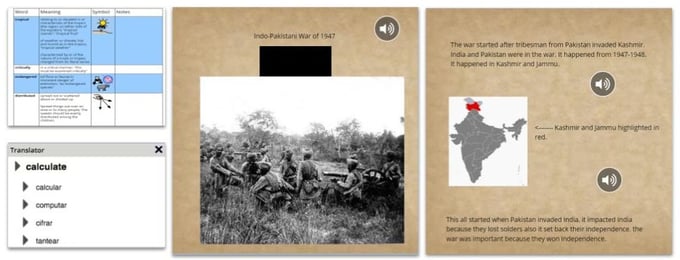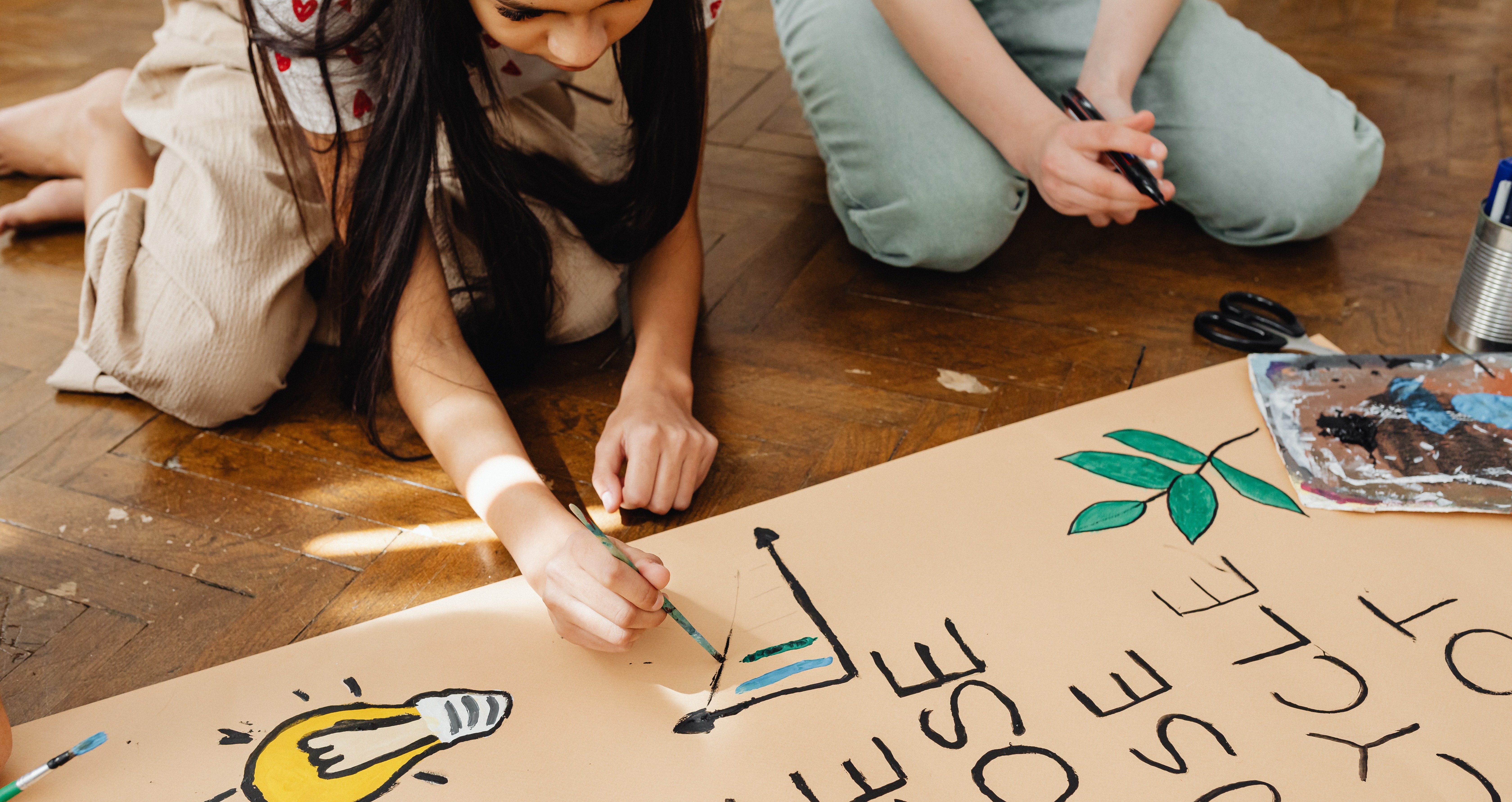In a billion dollar educational technology industry rife with iPads, Chromebooks, and learning management systems, it is enticing to use technology tools that promise to improve learner outcomes, ease the tasks of teaching and learning, or profoundly engage the digital natives in our classrooms. Engagement is a complex concept in the world of education and something all educators seek to capture. We are often taught that if students are engaged, they are excited and more likely to interact with the concepts, learn, and show their mastery of learning. This sounds simple enough, right? Capturing student engagement and sustaining it, however, it is not often quite as straightforward at first glance. For starters, the term “engagement” itself is a complex one, made up of many layers. Recognizing there are layers, understanding that variability exists in the learning environment, and designing flexible options to support learner variability is a way to progress through layers of engagement to reach the level even above engagement: empowerment.
Focus on Accessibility
One of the quickest ways we can boost the level of engagement in our learning environment is conquering what one may consider to be the first, initial layer of student engagement: accessibility. This may sound like a no-brainer, but it is difficult for a student to be excited or motivated in the learning environment if the student has learning materials that do not fit his or her unique needs, such as amplified audio or sound, closed captions, access to screen-readers, or translation supports. While there is not one means of instruction or technology that will be optimal for all learners in all learning environments, technology can be a powerful tool to provide options for all learners. Our students with IEPs, ILPs, and 504 plans have documented needs for additional support in the learning environment or materials in an accessible modality to their needs; however, additionally, other students without a legal document requiring accessibly designed materials may also benefit. For example, the student who sits in the back of the room may benefit from the option to have closed captions available for video if the student is far away from the speaker or cannot see the captions on screen from the position in the classroom. While designing and providing accessible materials following accessibility standards seems simple enough (it is), it can go a long way in minimizing threats and distractions in the learning environment so that all learners feel welcomed, recognized, planned for, and supported. It honors learners' needs and can ensure that they truly can engage in the lesson activities without unnecessary barriers.
Provide Students with Voice and Choice
Additionally, providing students with voice and choice, in addition to accessible designed resources, is another means to dig into another, upper crust layer of engagement and better excite, motivate, and educate our students. To boost engagement, in addition to designing accessible materials, educators should look-really look- at their learning goals and consider where flexible choices can be provided to students to help them show mastery of the goal. This may include rewriting your learning goals to truly identify what you are hoping to measure. For example, if I were a middle school social studies teacher and my students were studying a unit on ancient China, one of my learning goals may be: students will explain the importance of inventions from ancient Chinese dynasties. There are many ways students can show mastery of this goal-why limit it to just one way, that ultimately, may present serious barriers to learning for some of our students? If I wrote the goal to say students had to explain the importance of the inventions through writing an essay, I have narrowed this lesson down to measuring essays as the sole way of determining mastery, whether I intended to do this or not. Some of my students may be able to create fantastic video projects that demonstrate this learning goal. Others may create graphic novels that highlight the achievements of Chinese dynasties and draw connections to the ongoing use of these inventions in modern times. However, by making my goal tied to the means by which my students must show mastery, I have squashed this creativity, and I’ll never get to see the wonderfulness that is the graphic novels and video projects. This is a lose-lose for everyone!
Engagement does not necessarily promote active involvement or ownership over the learning. Consider this example: you go to a movie theater to watch the newest action movie. While in your seat and watching the movie, fully engrossed in the special effects and amazing stunts, you might be completely engaged. The experience of watching the movie, however, is passive. When empowered, not just engaged, students are willing, active participants who take ownership and responsibility for their own learning. The Future of Jobs Report 2022 captures survey data from businesses around the world and the 2022 survey indicated that future jobs will need flexible thinkers, problem-solvers, and individuals who are resourceful. We build these skills by giving our students the autonomy to shape and drive their learning experiences and the environment itself.
Picture of an Empowered Student
In one of my classes of 7th grade social studies students, one of my students, José, moved to our school mid-year and was quite shy. He loved school but often was quiet in class and was working on his confidence in speaking in English in front of his peers; he spoke Spanish fluently. When José joined our class, I made a conscious effort to ensure all of the videos I provided in class had Spanish subtitles available, as well as the ability to use tools like Immersive Reader to provide picture dictionaries, dictionaries, and translations. I made sure I added more visuals into my materials, too, so that another accessible form of information was available to José.
.jpg?width=300&height=300&name=Untitled%20design%20(20).jpg) Additionally, I spent time showing him how to use translation tools on his Chromebook, accessibility tools, and text-to-speech features in the learning management system, and shared with him that these were options he would always have the option to access when he needed them. In the study hall class I had with him, I noticed he was using the tools in his other classes, not just social studies, because he felt empowered by the option to utilize them and he was making the responsible decision to use the support he knew that he would benefit from. As the year progressed, I also noticed José showing other students how to use the tools, too, often sharing his “hacks” and tips for using the tools in all of his classes. He not only felt empowered to use the tools himself, but wanted to support others who may have needed the option. Fast forward several months ahead, and Jose is a much more confident student in class. When students were given the learning goal to explain the similarities of the independence movements for Indian and South Africa, students were given freedom in how they could show their understanding in their final project. José created a digital eBook with a peer and in this eBook, he included text, images of concepts, audio narration, and a glossary of terms. In his book, the audio narrations were in both English and Spanish, as were the dictionaries and text. He even showed his classmates when presenting the project how one could easily translate the whole book into any language they wanted in case they wanted a language other than English or Spanish. When talking to José about his project, I asked him what drove his decision to add in the different multilingual elements to his project, and he shared that he wanted his family to be able to understand the book he created, specifically his little brother, but he also wanted to create a book that anyone could read. If I had given José a project where I defined the parameters, he could have possibly come up with a project similar to this, depending on the output I specified; he could have still shown mastery of the learning goal, too. However, I cannot say that by limiting his options in this assignment, that he would have felt as empowered to create a product with so much personal significance, meaning, and impact, as what he produced in this one. By providing José with the flexible options he needed, the autonomy to use the supportive, accessibility tools he wanted whenever he wanted, and the freedom to show his understanding in a modality he needed, he demonstrated the qualities of an expert learner. Don’t we all want to create learning experiences so that students have that awesome moment, and continue to have those moments, like José?
Additionally, I spent time showing him how to use translation tools on his Chromebook, accessibility tools, and text-to-speech features in the learning management system, and shared with him that these were options he would always have the option to access when he needed them. In the study hall class I had with him, I noticed he was using the tools in his other classes, not just social studies, because he felt empowered by the option to utilize them and he was making the responsible decision to use the support he knew that he would benefit from. As the year progressed, I also noticed José showing other students how to use the tools, too, often sharing his “hacks” and tips for using the tools in all of his classes. He not only felt empowered to use the tools himself, but wanted to support others who may have needed the option. Fast forward several months ahead, and Jose is a much more confident student in class. When students were given the learning goal to explain the similarities of the independence movements for Indian and South Africa, students were given freedom in how they could show their understanding in their final project. José created a digital eBook with a peer and in this eBook, he included text, images of concepts, audio narration, and a glossary of terms. In his book, the audio narrations were in both English and Spanish, as were the dictionaries and text. He even showed his classmates when presenting the project how one could easily translate the whole book into any language they wanted in case they wanted a language other than English or Spanish. When talking to José about his project, I asked him what drove his decision to add in the different multilingual elements to his project, and he shared that he wanted his family to be able to understand the book he created, specifically his little brother, but he also wanted to create a book that anyone could read. If I had given José a project where I defined the parameters, he could have possibly come up with a project similar to this, depending on the output I specified; he could have still shown mastery of the learning goal, too. However, I cannot say that by limiting his options in this assignment, that he would have felt as empowered to create a product with so much personal significance, meaning, and impact, as what he produced in this one. By providing José with the flexible options he needed, the autonomy to use the supportive, accessibility tools he wanted whenever he wanted, and the freedom to show his understanding in a modality he needed, he demonstrated the qualities of an expert learner. Don’t we all want to create learning experiences so that students have that awesome moment, and continue to have those moments, like José? 
Image: A snapshot of Jose's eBook
When thinking about student engagement - take it a step further. Think about how the environment can empower students. Think about what barriers you can remove through accessible design and what flexible choices you can give students so that they have valuable co-designing roles in their own education. When you think about learning, think about empowerment first, and everything else-including engaging, transformative learning experiences - will follow!
Continue Your Learning.
Empower students to think deeper, collaborate better, and problem-solve meaningfully.
Sources:
- Hall, T.E., Meyer, A., Rose, D.H. (2010). Universal design for learning in the classroom: Practice applications. CAST publications.
- Knudson, K.C. (2022, October 18). How UDL prepares students with the necessary skills needed for tomorrow’s workforce. Novak education. https://www.novakeducation.com/blog/universally-designing-for-the-future?utm_content=225073204&utm_medium=social&utm_source=linkedin&hss_channel=lis-qvAGCfF8o0
- Rose, D. (2012, May 7). Transforming education with universal design for learning. The White House Blog. https://obamawhitehouse.archives.gov/blog/2012/05/07/transforming-education-universal-design-learning
- World Economic Forum (2022, May). Jobs of tomorrow: The triple returns of social jobs in the economic recovery. World economic forum. https://www3.weforum.org/docs/WEF_Jobs_of_Tomorrow_2022.pdf




